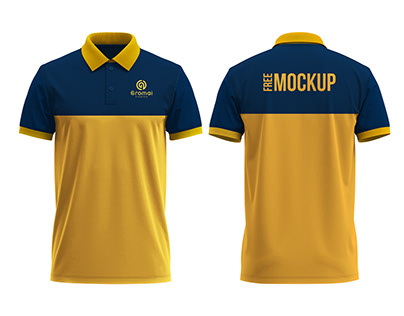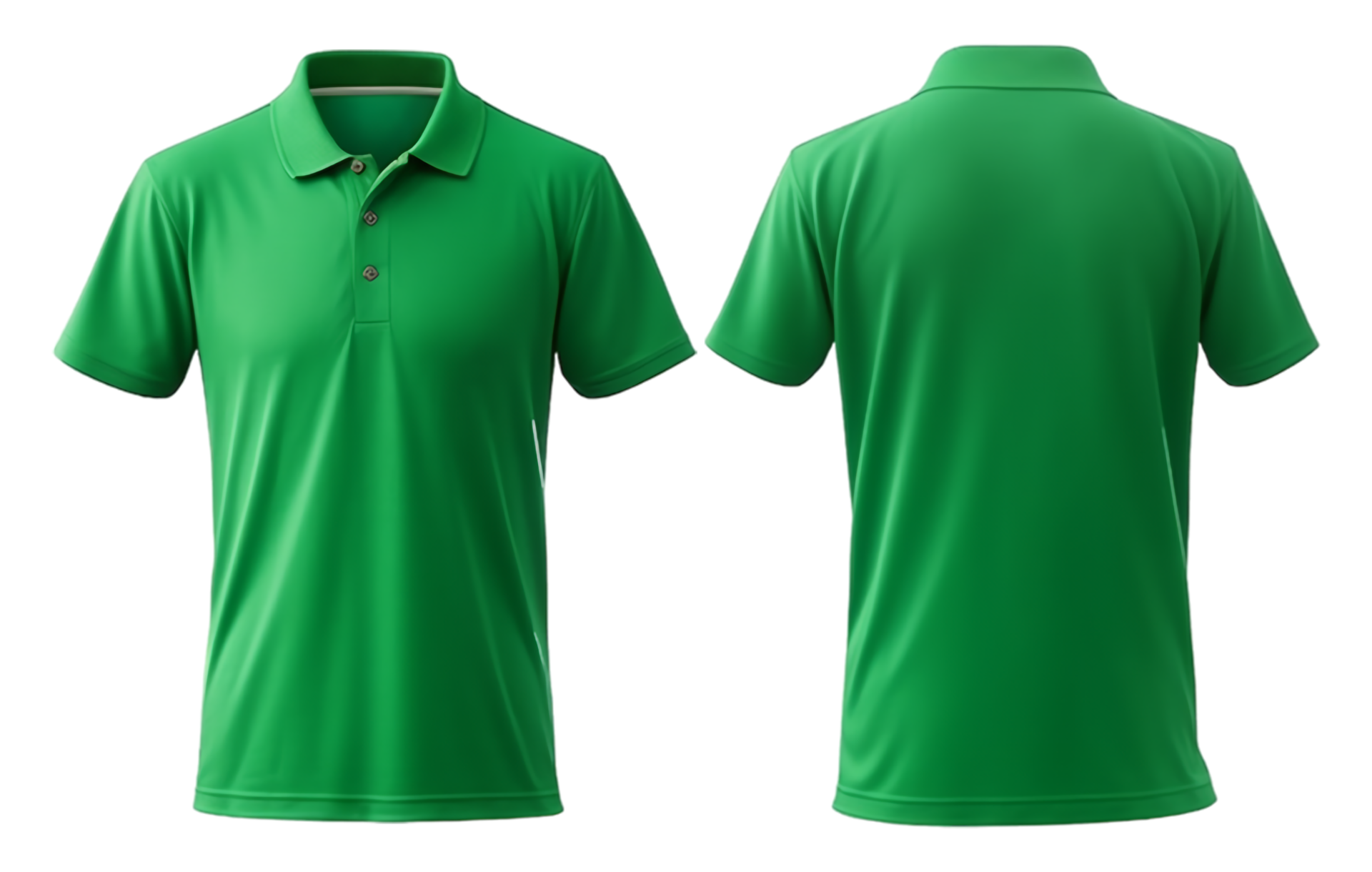The humble polo shirt. It's a true wardrobe staple, a chameleon of clothing that effortlessly transitions from casual weekends to smart-casual office environments, and even makes a statement on the golf course or tennis court. Its versatility and timeless appeal are undeniable. But when you're browsing for a new polo, whether online or in a store, how often do you truly consider the complete design? Most of us are quick to judge a book by its cover, or in this case, a polo by its front view. However, to truly appreciate a polo shirt's design, understand its potential, and make an informed purchase, you absolutely need to view its front and back pictures. It's the only way to get the full story.
Think about it: a polo shirt isn't just a flat image; it's a three-dimensional garment that drapes and moves with the wearer. The front might catch your eye with a crisp collar or a subtle logo, but what about the rest of the shirt? The back can hold just as much design intention, functionality, and stylistic detail as the front. Ignoring it means missing out on crucial aspects that could make or break your decision. This article will explore why a 360-degree view is essential, what specific details to look for on both sides, and how this comprehensive approach can elevate your style, branding, or team uniform choices.
More Than Just a Front Face: The Importance of a Complete View
Our eyes are naturally drawn to the front of a garment. It's where the most immediate details like the collar, placket, and any prominent logos usually reside. But a polo shirt is a holistic design, and understanding how all its elements work together requires looking beyond the obvious.
The Front: First Impressions and Key Details
The front of a polo shirt is, without a doubt, the star of the show for first impressions. When you look at the front, you're assessing several critical elements:
- Collar and Placket: Is it a classic ribbed collar, a cut-and-sew, or something more contemporary? How many buttons does the placket have? Are they visible or hidden? The quality and style of these features significantly impact the shirt's overall formality and feel.
- Fabric Texture and Color: How does the fabric look? Is it a pique knit, jersey, or a performance blend? The texture can affect how the light catches the shirt and how it drapes. The color, of course, sets the tone.
- Logo/Embroidery Placement: For many, a logo is key. Is it on the left chest, right chest, or perhaps a sleeve? Its size and execution (embroidered, printed, patch) speak volumes about the brand and the shirt's purpose.
- Fit and Draping: Even in a flat picture, you can often get a sense of the fit around the shoulders and chest. Does it look tailored or relaxed?
These front-facing details are vital, but they only tell half the story. To truly understand the garment, we need to turn it around.
The Back: The Unsung Hero of Polo Shirt Design
The back of a polo shirt is often overlooked, yet it can house significant design elements and functional features that contribute immensely to the shirt's overall appeal and practicality. Here's why the back view is so important:
- Plain vs. Patterned Back: Is the back a continuation of a front pattern (like stripes) or a solid color? Sometimes a polo might have a subtle texture or pattern on the back that isn't immediately obvious from the front.
- Yoke Design: The yoke is the section of fabric across the shoulders. While often subtle, a well-designed yoke can improve fit, drape, and even add a stylistic touch, sometimes in a contrasting fabric or stitch.
- Ventilation and Performance Features: For athletic or performance polos, the back is often where you'll find mesh panels, laser-cut perforations, or special fabric zones designed for breathability and moisture-wicking. These are crucial for comfort and function.
- Logo/Branding on the Back: Many brands, especially in sports or corporate wear, place logos or branding on the back of the neck, across the shoulders, or even a larger graphic on the lower back. This is prime real estate for visibility.
- Hemline and Side Vents: Does the hemline drop lower at the back (a 'drop-tail' hem)? Are there side vents? These details affect how the shirt sits and moves, especially when untucked.
- Overall Draping and Fit: The back view gives you a complete picture of how the shirt hangs from the shoulders, across the back, and around the waist. This is essential for understanding the true fit and silhouette.
Why a 360-Degree View Matters for Different Needs
The importance of seeing both the front and back extends beyond mere curiosity. It serves practical purposes for various individuals and organizations.
For Personal Style and Wardrobe Building
When you're building your personal wardrobe, every piece should work in harmony. Seeing both sides of a polo helps you:
- Avoid Surprises: No one wants to buy a shirt they love from the front, only to discover an unexpected pattern or branding on the back that doesn't suit their style.
- Ensure Cohesion: You can better visualize how the polo will look with your existing trousers, shorts, or jackets, ensuring a cohesive and polished look from every angle.
- Understand the True Fit: How a shirt drapes from the back is just as important as the front for comfort and aesthetic appeal.
For Businesses and Team Uniforms
For businesses looking to outfit employees or teams, a comprehensive view is non-negotiable for branding and professionalism.
- Consistent Branding: If your logo is on the front, you need to ensure any back details don't clash or detract from your brand image. Conversely, you might want a secondary logo or message on the back for maximum visibility.
- Professional Appearance: Employees or team members will be seen from all directions. A uniform needs to look sharp and professional whether someone is facing you or walking away.
- Functionality for the Job: If the polo is for active roles, performance features on the back (like ventilation) are critical and must be visible to ensure they meet the job's demands.
For Event Organizers and Promotional Merchandise
When designing merchandise for events, concerts, or promotional giveaways, maximizing impact from every perspective is key.
- Maximizing Visibility: An event polo isn't just for those facing the wearer. Attendees will be moving around, and a well-designed back can extend your message or brand reach.
- Creating Memorable Designs: A unique back design can make a polo stand out in a crowd and become a more memorable keepsake.
- Crowd Impact: Imagine a large group wearing your polos. A consistent and appealing back design creates a powerful visual impact when viewed from behind.
Practical Tips for Finding Front and Back Views
In today's digital age, finding comprehensive views of polo shirts is easier than ever, but it still requires a conscious effort:
- Online Shopping: Always scroll through all available product images. Many retailers now offer multiple angles, including clear front and back shots, sometimes even 360-degree interactive viewers. Look for photos of the shirt on a model to see how it drapes.
- Product Descriptions: Read the detailed descriptions carefully. They often highlight features that might not be immediately obvious from pictures, such as a drop-tail hem or specific back paneling.
- Retail Stores: Don't just look at the polo on the hanger. Take it off, turn it around, feel the fabric, and if possible, try it on and check yourself in a full-length mirror from all angles.
- Ask Questions: If you're shopping online and can't find a back view, don't hesitate to contact customer service. A reputable seller should be able to provide one or answer specific questions about the back design.
What to Look For When Comparing Front and Back
When you have both front and back views, here's a checklist of what to actively compare and consider:
- Consistency: Do the colors, patterns, and fabric textures remain consistent from front to back, or are there intentional variations? Ensure any variations are desirable.
- Balance: Does the overall design feel balanced? If there's a prominent feature on the front, does the back complement it, or does it feel neglected or overly busy?
- Functionality: Are any back features (like vents, pleats, or mesh panels) practical for your intended use? Do they enhance comfort and performance?
- Branding and Embellishments: How does any branding on the front relate to branding or other embellishments on the back? Is the overall branding strategy cohesive?
- Overall Aesthetic: Step back and consider the complete garment. Does the front and back together create a harmonious and appealing aesthetic that meets your expectations and needs?
Final Summary
In conclusion, while the front of a polo shirt undoubtedly makes the first impression, its back view is equally, if not more, critical for a comprehensive understanding of its design, functionality, and overall appeal. From subtle yoke designs and performance-enhancing ventilation to strategic branding placement and the way the fabric drapes, the back of a polo shirt holds a wealth of information that can significantly influence your purchasing decision. Whether you're a fashion-conscious individual, a business owner, or an event organizer, taking the time to view polo shirt designs from both the front and the back ensures you make informed choices, resulting in better style, effective branding, and ultimately, greater satisfaction with your chosen garment. Always seek the full picture; your wardrobe, brand, or event will thank you for it.




